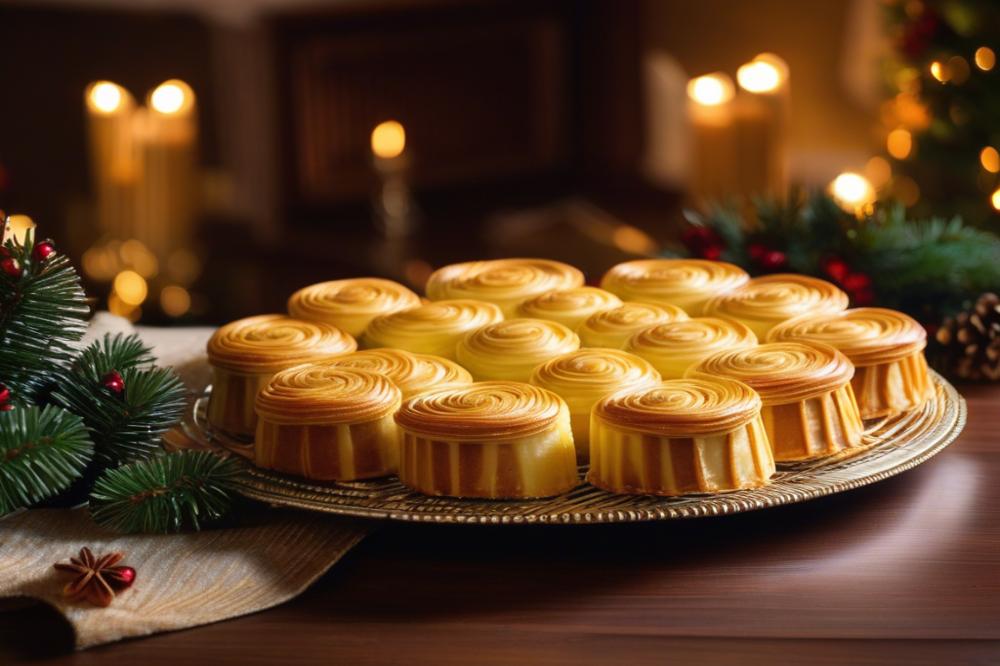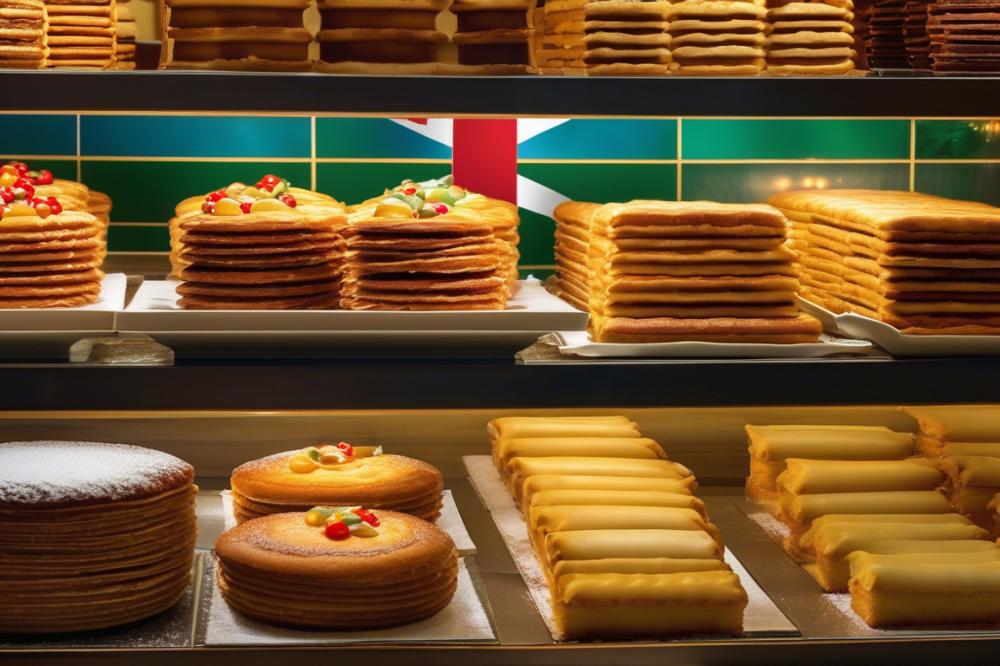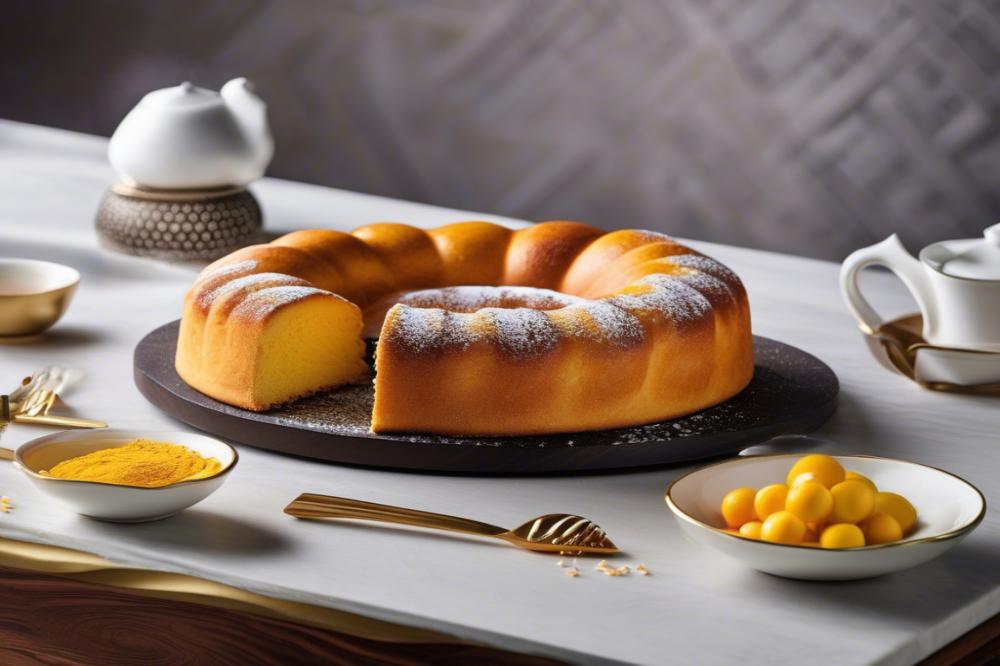Introduction
The Gubana pastry is a delightful Italian dessert that captures the essence of traditional baking. Known for its rich flavor and unique texture, this sweet bread originates from the Friuli Venezia Giulia region of Italy. Bakers have crafted this treat for generations, making it not just a dish, but a part of their cultural heritage.
This pastry often features an enticing nut filling, complemented by dried fruit and spices. The dough preparation is crucial, as it must be soft yet sturdy enough to hold the delicious interior. Many families savor Gubana during holiday celebrations, where it serves as a symbol of festivity and joy. This regional specialty has become a cherished tradition, reflecting local customs and flavors.
The significance of Gubana extends beyond mere taste. It represents a bond among families, as recipe sharing occurs during festive gatherings. Across Italy, different versions may exist, yet the essence remains similar. Crafting this pastry involves various baking techniques, allowing bakers to showcase their skills. By making an authentic Italian recipe, one can experience a slice of Italy right in their own kitchen.
Understanding Gubana pastry


The Gubana pastry is a traditional Italian dessert with roots deep in the Friuli Venezia Giulia region. It is often described as a sweet bread, filled with an assortment of ingredients that make it truly special. Typically, each Gubana features a rich nut filling and a medley of dried fruit. This delightful pairing of flavors creates a taste that is both comforting and festive.
In terms of characteristics, Gubana stands out due to its unique spiral shape and its soft, slightly airy dough. The dough preparation requires careful kneading to achieve the right texture. Often, bakers use rich butter or eggs to enhance the flavor and ensure a tender crumb. The filling can vary widely, with walnuts, almonds, and raisins being common choices. Some family recipes include a splash of local spirits such as grappa, adding depth to the overall flavor.
Comparison to Other Italian Pastries
Moreover, this baked treat is less mainstream than other varieties. It does, however, hold a valuable place during special occasions. Families in the region often enjoy Gubana during holidays and celebrations. Its preparation becomes a joyful ritual that brings people together, fostering a sense of community.
Cultural Significance and Traditional Uses
The cultural significance of Gubana runs deep. Traditionally, it is a holiday treat, often shared with friends and family. Different towns in Friuli have their unique twists on the recipe, making it a regional specialty that reflects local tastes and traditions. This evolution of the cake showcases the area’s rich culinary heritage.
In festive times, Gubana does more than just satisfy the sweet tooth. It serves as a symbol of hospitality and craftsmanship. Offering Gubana to guests signifies warmth and welcoming. Baking techniques passed down through generations emphasize the importance of family recipes. As generations adapt these recipes, they keep alive the traditions that celebrate their identity.
Ingredients and Cooking Instructions


List of Ingredients
- For the dough:
- 500 g all-purpose flour
- 100 g sugar
- 10 g active dry yeast
- 2 large eggs
- 150 ml warm milk
- 80 g unsalted butter, melted
- 1 pinch of salt
- Zest of 1 lemon
- 1 teaspoon vanilla extract
- For the nut filling:
- 200 g walnuts, finely chopped
- 100 g dried figs, chopped
- 50 g raisins
- 80 g sugar
- 1 teaspoon cinnamon
- 2 tablespoons rum or brandy
Preparation of Nut Filling
Start with the dried fruit. Mix the chopped figs and raisins in a bowl. Add the chopped walnuts to the fruits. Pour in the sugar and stir well. Following that, sprinkle in the cinnamon for flavor. Finally, add the rum or brandy to moisten the mixture. This nut filling provides both texture and sweetness. Set it aside for later use.
Dough Preparation
Begin by activating the yeast. In a small bowl, combine warm milk and a teaspoon of sugar. Sprinkle the yeast on top and let it sit for about 10 minutes. This mixture will foam up and indicate that the yeast is alive. While waiting, mix flour, remaining sugar, and salt in a large bowl. Create a well in the center. Crack the eggs into the well and add the melted butter, lemon zest, and vanilla extract. When the yeast mixture is ready, pour it into the well as well. Stir everything together using your hands or a wooden spoon until a dough forms. Knead the dough on a floured surface for about 10 minutes until it becomes smooth and elastic. Cover it with a kitchen towel and let it rise in a warm place for about one hour, or until it has doubled in size.
Assembling and Baking the Pastry
Once the dough has risen, punch it down to release air. Roll the dough out to about ½ inch thickness. Shape it into a rectangle or oval, depending on your preference. Spread the nut filling evenly on the rolled dough, leaving a small border around the edges. Roll the dough tightly, pinching the ends to seal. You can twist it gently to create a spiral effect. Place the rolled dough onto a baking tray lined with parchment paper. Allow it to rise for another 30 minutes. Preheat your oven to 180°C (350°F). Brush the top with an egg wash for a beautiful golden finish. Bake for about 30-35 minutes until the pastry is golden brown. After baking, let it cool before slicing. This sweet bread is a delightful holiday treat that highlights a rich regional specialty.
Nutritional Information


Detailed Nutritional Breakdown of Each Ingredient
Gubana is composed of several key ingredients that contribute to its flavor and texture. The dough preparation typically includes flour, sugar, eggs, and butter. Flour is a primary source of carbohydrates. Sugar adds sweetness but also increases caloric content. Eggs provide protein along with vital vitamins. Butter enhances flavor but is high in saturated fat. Each bite contains the essence of traditional pastry making.
The nut filling often features walnuts or almonds. Nuts are rich in healthy fats, protein, and fiber. Dried fruits such as raisins or figs contribute natural sweetness. These fruits also offer essential nutrients like potassium and antioxidants. Bakeries in different regions may include specific local ingredients, making this a regional specialty.
Health Considerations and Variations for Dietary Needs
For those concerned about dietary restrictions, variations can be made. Gluten-free flour can replace regular flour for gluten sensitivity. Almond milk may serve as a substitute for regular milk in some recipes. Some bakers opt for less sugar to benefit those monitoring blood glucose levels. A vegan version replaces eggs and butter with alternatives like flaxseed and coconut oil.
Those seeking a lower-calorie dessert can try reducing the quantities of fat or sugar. It is essential to balance health concerns with flavors. With careful adjustments, Gubana can cater to various dietary preferences while retaining its exciting essence.
Caloric Content and Potential Substitutions
Caloric content varies based on ingredient choices. A typical serving might contain around 300 to 400 calories. Each nut butter or fruit type can alter this number. For instance, traditional sweet bread may have fewer calories if made with applesauce instead of sugar. Using less butter also helps decrease calories significantly.
Some individuals prefer lower-fat options. Substituting part of the butter with applesauce not only lowers fat but adds moistness. Ingredients like honey can replace refined sugar without sacrificing taste. Such substitutions allow everyone to enjoy this holiday treat delights while keeping health in mind.
Different baking techniques can also impact health positively. Opting for baking rather than frying reduces fat content. Ultimately, understanding ingredients empowers those looking for a balanced approach to enjoying this delightful Italian dessert.
Baking Techniques for Perfect Gubana
When making this Italian dessert, mastering the dough preparation is crucial. Start with high-quality ingredients. Flour should be unbleached and finely milled. Use fresh eggs for richness and flavor. Combining these elements will help create a soft, elastic texture.
After mixing the dough, kneading gets it to the right consistency. Knead it for about ten minutes. Be patient; this step develops gluten, making the dough rise higher. If using a stand mixer, allow it to mix for approximately five to six minutes on medium speed.
Adding the right filling is just as important. Traditional recipes often contain a mix of nuts, dried fruit, and spices. Experimenting with flavors can yield delightful results. However, be cautious not to overload the dough with too much filling, as it may tear during baking.
Tips for Achieving the Best Dough Texture and Flavor
Baking at the right temperature matters immensely. Preheat your oven to 350°F. A properly heated oven helps the pastry rise evenly. Observe the Gubana as it bakes. It should turn a beautiful golden brown, indicating it’s done.
Allow the sweet bread to cool before slicing. This helps set the structure. Enjoy it fresh, or let it sit overnight for even better flavor. The filling flavors develop over time, making it a delightful holiday treat when shared with others.
Common Mistakes and How to Avoid Them
One common pitfall is under-kneading the dough. This can result in a dense pastry that doesn’t rise well. Pay attention to the dough’s texture. If it feels sticky or overly soft, add a bit more flour during the kneading process.
Another mistake is not allowing the dough to rest. After kneading, let it rise in a warm place. This second rise improves texture and flavor. Skipping this step will affect the overall quality of your pastry.
Recommended Baking Tools and Equipment
Having the right tools simplifies the baking process. Use a large mixing bowl for combining ingredients. A stand mixer is helpful but not necessary. A rolling pin is essential for shaping the dough evenly.
Investing in a good quality baking sheet can also make a difference. Choose one with a non-stick surface or line it with parchment paper. This prevents sticking and easy cleanup.
Lastly, a food processor can be handy when preparing nut filling. It helps achieve a consistent texture quickly. These tools combined will elevate your Gubana-making experience.
Serving Suggestions and Pairings
Traditional Ways to Serve Gubana
Gubana is a delightful Italian dessert often enjoyed during festive occasions. When serving this rich pastry, slice it into wedges to reveal its beautiful layers. A simple dusting of powdered sugar on top adds a touch of elegance. Some families also like to serve it warm, straight from the oven. Warmth enhances the flavors, making every bite more enjoyable.
Complementary Dishes and Beverages
Various dishes complement this sweet bread. A fresh fruit salad can balance its richness. Pairing it with a scoop of vanilla gelato may create a perfect dessert duo. For beverages, consider a glass of sweet dessert wine, such as Vin Santo. Coffee is another excellent choice, as it balances the sweetness of the nut filling. Herbal teas can also provide a soothing contrast.
Creative Variations to Enhance the Gubana Experience
Explore different fillings for a twist on the traditional pastry. Using candied citrus peel can add a refreshing zing. Mixed berries could introduce a tart flavor that many enjoy. Some people even experiment with chocolate, creating a luxurious treat. Adding spices like cinnamon or nutmeg can also elevate the taste. Different baking techniques can change the texture. For instance, a longer bake may result in a crispier crust, while a shorter bake keeps it soft. Personal touches can enhance the experience, making it even more enjoyable.
Final Thoughts on Gubana and the Art of Italian baking
Recapping the significance of Gubana in Italian dessert culture reveals its deep roots and rich history. This pastry is not just a treat; it embodies tradition and warmth. Families share it during special occasions, marking celebrations with a sweet layer of delight. Many consider it a symbol of hospitality and generosity.
Trying your hand at making Gubana at home can be a rewarding experience. With the right ingredients and some dedication, you can create a truly authentic version. The process of baking not only provides a tasty reward but also allows for a connection with Italian heritage. Imagine enjoying a slice fresh from the oven, paired with coffee or wine. It creates a moment worthy of sharing.
Embracing the art of baking Italian pastries can be a delightful journey. Each recipe can teach skills and foster creativity. Gubana is a perfect starting point for anyone looking to explore this culinary world. So, gather your ingredients and roll up your sleeves. Your kitchen can become a place of discovery, joy, and delicious creations. Enjoy every step of the process, and indulge in the flavors of Italy.

